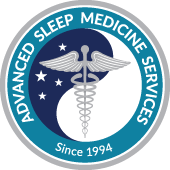Telemedicine was a hot topic at this year’s Sleep conference, a joint meeting of the American Academy of Sleep Medicine and the Sleep Research Society, in Denver, Colorado.
Telemedicine has been embraced by primary care physicians in rural areas who struggle to arrange for specialist consultations for their patients who have limited access due to the cost or convenience of traveling to the major cities where these specialists usually reside.
If telemedicine can increase access to specialists, can it help the millions of undiagnosed Americans suffering with sleep apnea and other sleep disorders?
What is telemedicine?
Telemedicine is defined as the use of telecommunications technology such as telephone, email, two-way video such as Skype and other tools to exchange medical information.
Telemedicine started out over 40 years ago in hospitals trying to reach patients in remote areas. It has since expanded rapidly with improvements in technology and dropping prices for technology for both healthcare providers and patients.
Telemedicine is not a separate medical specialty but can be used to electronically communicate or deliver clinical care for a wide spectrum of specialties from dermatology to psychiatric care.
Some examples of the services provided and the mechanisms used to provide those services are:
Primary care and specialist referral services
Doctor-to-doctor or doctor-to-patient. This may involve a primary care doctor or other healthcare professional consulting directly with a patient or with another physician or specialist about that patient’s care. It may involve sharing images, files or other data such as an x-ray or photos.
Remote patient monitoring
Uses devices to remotely collect and send data to a healthcare provider for interpretation. Examples are measuring vital signs like blood glucose or heart ECG for home-bound patients. Remote CPAP (sleep apnea therapy, learn more here) compliance monitoring falls under this (learn more about how this works here).
Consumer medical and health information
Using the internet and wireless devices for consumers to get specialized health information. This includes online support groups that provide peer-to-peer support. Learn more about online resources for CPAP support here.
What does telemedicine for sleep disorders look like?
There are several options here:
- Consults between a patient and his primary care physician and the sleep specialist to assess a suspected sleep disorder.
- Consults directly between a patient and a sleep specialist (referred by the PCP or self-referred)
- Follow-ups with respiratory therapists or technologists to help patients with on-going compliance, mask fittings and device troubleshooting.
- Remote CPAP usage monitoring (now required by many insurance companies, learn more here)
Can a physician prescribe a sleep study or CPAP from a telemedicine session?
Yes, in most cases a physician can prescribe a sleep study or CPAP therapy through a telemedicine consultation. The physician must meet the same state guidelines as if you were seeing him or her in their physician office for are regular visit.
Insurance coverage for telemedicine consults
Each state varies on regulations and reimbursement in regard to the use of telemedicine. Payment and coverage for services delivered via telemedicine are some of the biggest challenges for telemedicine adoption. According to the American Telemedicine Association’s 2016 50 State Telemedicine Gaps Analysis, “Patients and health care providers may encounter a patchwork of arbitrary insurance requirements and disparate payment streams that do not allow them to fully take advantage of telemedicine.”
The California Department of Healthcare Services has policies for teleheath that align with the California Telehealth Advancement Act of 2011 for all healthcare providers in California, including Medicare and Medicare beneficiaries. Medi-Cal, the state Medicaid program, pays for the following services provided via telehealth:
-
Selected Evaluation and Management (E&M) services for patient visit and consultation.
-
Selected psychiatric diagnostic interview examination and selected psychiatric therapeutic services.
-
Teledermatology by store and forward.
-
Teleophthalmology by store and forward.
-
Teledentistry
-
Transmission costs (up to 90 minutes per patient, per day, per provider).
-
Originating site facility fee.
-
Interpretation and report of X-rays and electrocardiograms performed via telehealth.
For wide-spread utilization, a lot depends on the private insurance companies embracing telemedicine as a cost-effective method for delivering care. For example, Blue Shield of California has a special collaboration with Adventist Health to provide high-speed access to specialist care and services for their members who line in remote and urban areas. The cost to see a telemedicine specialist through this program is the same as the regular specialist co-pay amount on the patient’s plan.
Is telemedicine the future of sleep medicine?
Possibly. In under served and rural areas of the country, where access to a sleep specialist is limited, telemedicine can bridge the gap. Technology is available today that allows for effective video communication even in areas with low internet speeds.
Sleep apnea is extremely underdiagnosed, to the point that the CDC declared sleep disorders a public health epidemic (read more here). There are an estimated 40 million Americans suffering from sleep apnea and only a fraction have received diagnosis and treatment. Major barriers to diagnosis are access to care, education about sleep disorders and treatment and cost. Telemedicine can address and reduce each of these barriers.
There are benefits to patients, physicians and the healthcare system as a whole to embrace telemedicine to improve healthcare access and reduce costs and we expect to see further adoption of telemedicine for sleep medicine and other specialities.
Do you or a loved one need a consultation with a sleep medicine specialist?
Sources:
http://www.americantelemed.org/
http://www.americantelemed.org/docs/default-source/policy/50-state-telemedicine-gaps-analysis—coverage-and-reimbursement.pdf
http://www.dhcs.ca.gov/provgovpart/Pages/Telehealth.aspx
Other posts you may find interesting:


